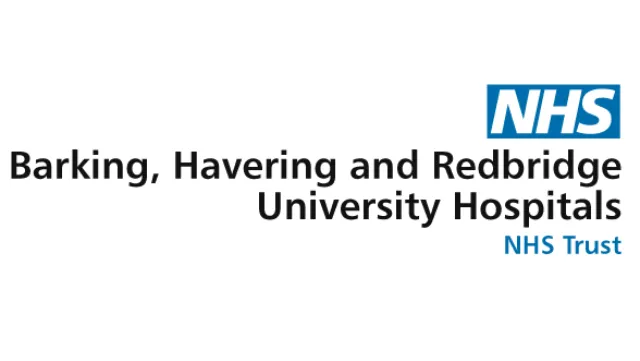You are here:
- Home
- >
- Knowledge Hub
- >
- Case Studies
- >
- CareFlow Connect Identifies Life Threatening Infection.
A System C customer since 2013, most recently, Barking Havering and Redbridge University Hospitals NHS Trust has been extending and enhancing their use of CareFlow Connect, as part of an ongoing digital transformation programme at the Trust.
CareFlow Connect is a secure and mobile clinical communications and collaboration system designed to facilitate faster and safer care co-ordination for clinical teams within a hospital and across a care community.
Right from the beginning of this journey, the patient benefits were evident. When a junior Tissue Viability nurse was concerned about moisture related skin damage, she acted swiftly and used CareFlow Connect to take a picture of the injury before attaching it to a referral that asked for expert follow-up advice from Debbie Wickens, the Trust’s Lead Tissue Viability Nurse.
Debbie leads the Tissue Viability team, assessing complex and chronic wounds around the hospital. She was working from home when she received the referral and was immediately concerned when she saw the wound. Unfortunately, it was later confirmed that the patient had a form of necrotising fasciitis, a rare but serious bacterial infection that affects the tissue beneath the skin and surrounding muscles and organs. The infection can be life threatening if it's not recognised and treated early on.
Debbie explains:
"Detecting the infection led to early intervention. The patient received an urgent surgical review, followed by potentially life-saving surgical intervention. This case really demonstrates the enormous value of CareFlow Connect and we’ve continued to realise the benefits ever since."
The Tissue Viability team are experiencing great results with CareFlow Connect. The app helps them work more efficiently, reserving initial face to face reviews for those who really require them, whilst stepping up activity on supporting ward staff by conducting more follow-up activities on patients. Previously, this had been difficult to achieve as the sheer volume of referrals is so high, making the prioritisation of referrals a challenge.
Photos are of clear value to the team, as they enable the team to triage patients and prioritise their workload by identifying more serious tissue damage quickly, reviewing these patients in priority order and putting in a plan of care. Shortly, the need to include photos for all referrals will be compulsory at the Trust.
Task management has proven essential for the Tissue Viability team too. The team’s workload is allocated via CareFlow Connect’s task management functionality and each task set for general and complex cases is allocated according to the skillset within the team. Tasks were previously allocated via paper, which is an Information Governance risk. In addition, the ability to schedule tasks will be available soon, which will provide further value.
Debbie says:
"As I walk around the hospital with my iPad, I see the list of team tasks get shorter and shorter – which is great to see!"
Referral management is currently a cumbersome process. The Tissue Viability team typically receive 90-100 referrals over a single weekend. For each referral, they need to check through emails and different systems to identify the patient and their location. The current referral systems provide no details on the condition of a patient either. Debbie explains, “Processing a single referral was a four to eight minute process. This has been reduced to a few seconds using CareFlow Connect. Also typically, it was taking our administrator a whole working day to process referrals. The administrative process involves verifying patient details and seeing if the patient was still in hospital, had moved wards etc. The automatic consolidation of this data into one system means that the administrator’s time has now been freed up considerably. The efficiency we’ve achieved is beyond words.”
The Tissue Viability team also benefit from CareFlow Connect’s handover feature, which incorporates Situation, Background, Assessment, Recommendation (SBAR); a popular technique in healthcare used to facilitate and prompt appropriate patient handover. Viewing a patient handover along with the referral means the team can see the patient’s medical history, including their Early Warning Score (EWS). This provides far richer clinical information and encourages a more intelligent triage decision, with clinical tags used to identify patients with a history of complex wounds. “Viewing handover information makes a real difference to the richness of advice that can be offered,” says Debbie.
She continues, “When a Tissue Viability Nurse reaches a ward that’s not using CareFlow Connect, we need to locate a patient’s medical notes, their nursing record and find the nurse caring for the patient to get up-to-date information from them prior to seeing the patient, which could take 20 minutes. On Careflow Connect, wards have immediate access to their medical history and handover notes, meaning the nurse can go straight to the bedside, saving that 20 minutes per patient.”
The team can now view referrals and complete handovers in minutes, seeing patients with serious cases face-to-face, according to the severity of their wound. Immediate advice and a care management plan is quickly provided to all patients.
Debbie says:
"Due to social distancing, I’m required to work from home one day a week. However, CareFlow Connect ensures that my clinical effectiveness is maintained, regardless of location."
The introduction of CareFlow Connect, in addition to other System C solutions, is helping transform the Tissue Viability service in many ways, including:
In addition to the Tissue Viability service, other multi-disciplinary teams such as the stroke, care of the elderly, orthopaedics and vascular teams are using CareFlow Connect to co-ordinate and improve care.
Reflecting on her overall experience of using the app, Debbie states:
"It’s making a difference to nurses lives as well as the lives of patients. We’re spending less time in front of a computer and more time at the bedside."

It’s making a difference to nurses lives as well as the lives of patients. We’re spending less time in front of a computer and more time at the bedside.